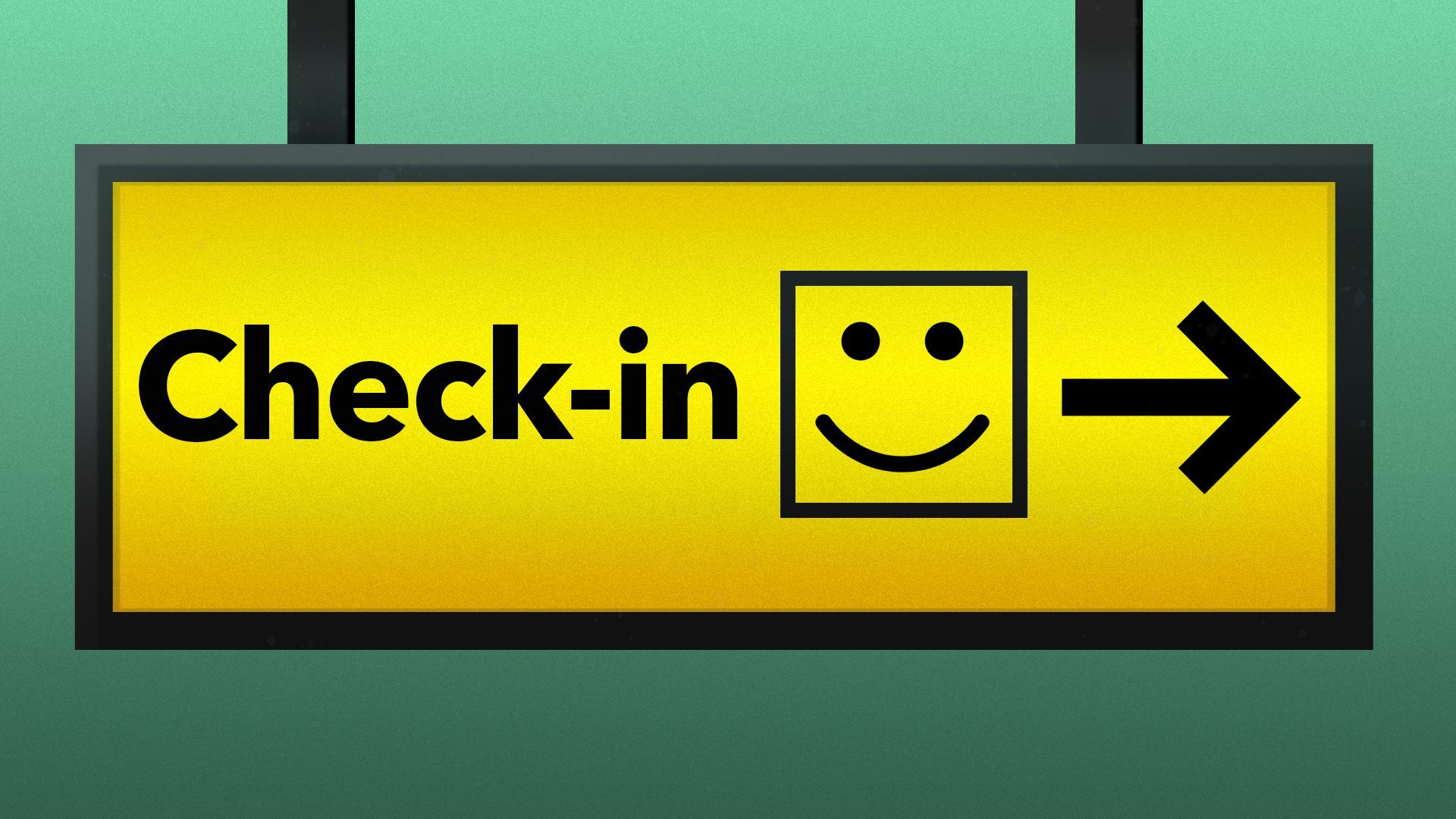| | | | | | | Presented By BigSpring | | | | Axios What's Next | | By Jennifer A. Kingson and Joann Muller · May 10, 2022 | | A thousand thanks to those of you who sent us pictures of robots doing interesting things! - We'll publish some of them in the days ahead. Meanwhile, keep those cards and letters (and pixels) coming! Email whatsnext@axios.com.
🧑🏽🎓 Join Axios' Russell Contreras and Erica Pandey today at 12:30 p.m. ET for a virtual event exploring initiatives to resolve financial barriers in higher education. Guests include Department of Education Secretary Miguel Cardona. Register here. Today's Smart Brevity count: 1,230 words ... 4½ minutes. | | | | | | 1 big thing: Budget airlines soar |  | | | Illustration: Aïda Amer/Axios | | | | New airlines don't come along very often, but the pandemic provided a rare opportunity for new carriers to establish themselves in smaller markets that had been abandoned by the major airlines in recent years, Joann Muller writes. Why it matters: Startups like Breeze Airways and Avelo Airlines represent a new generation of low-frills carriers that aim to disrupt the status quo just as Jet Blue and Southwest Airlines did decades earlier. - They're using technology as a differentiator — in addition to low fares and convenient routes.
Driving the news: Several de novo airlines were born during the pandemic, taking advantage of the near-shutdown of air travel that brought the big-name carriers to their knees not long ago. The newcomers have grown quickly, adding new, larger planes and more nonstop routes to bigger cities: - Breeze, which launched a year ago mostly on the East Coast, is now offering $99 one-way fares to Los Angeles, San Francisco and Las Vegas. And it just announced service from Westchester County Airport, a popular alternative to New York's three busy airports.
- Avelo, which started last year on the West Coast, is now adding routes such as New Haven, Conn.,-to-Orlando, Fla.
- PLAY, an Icelandic airline launched last year, is offering cheap flights to Europe, through Reykjavik, from Baltimore/Washington, D.C., Boston, New York and Orlando.
The tech angle: Breeze was the brainchild of David Neeleman — who also founded JetBlue and other airlines — and it's taking a "tech-first" approach to customer service. - You have to book and manage your flights through an app — there is no toll-free customer service number.
- Passengers communicate with Breeze representatives solely via text, chat or Facebook messenger.
Yes, but: The remote encounters don't sit well with everyone, as complaints on the company's Facebook page indicate, notes USA Today. Read the full story. |     | | | | | | 2. Bonus: Airports as happy "places of encounter" |  | | | Illustration: Sarah Grillo/Axios | | | | A new report on the future of travel envisions that biometrics could eliminate airport security hassles, making the days of removing your shoes and belt before you board obsolete, Jennifer A. Kingson writes. Why it matters: Flying was a far more pleasant experience before today's onerous passenger screenings became necessary. If facial recognition and other technology can handle security checks invisibly, airports can one day become enjoyable social and retail hubs. Driving the news: The airport of 2038 will be a "place of encounter," where passengers arrive "ready to fly," thanks to ubiquitous scanners and cameras that evaluate security threats "multiple times a minute, all as you go about your day," according to a report on the future by Delaware North. - There won't be a need to differentiate "sterile" and "non-sterile" areas of the airport — everyone will be free to go straight to their flight.
- "We'll even be allowed to walk loved ones to their gates again," according to the vision laid out by Delaware North, which operates retail stores and restaurants in airports.
Reality check: Privacy concerns are likely to accompany the continued rollout of biometric monitoring, but, let's face it — the horse is already out of the barn. - Systems like CLEAR and TSA pre-check already pre-screen passengers to some extent, and Delta debuted its first "biometric terminal" at Atlanta-Hartsfield in 2018.
- "Sixty-four percent of airports globally plan to roll out self-boarding gates using biometrics and ID documentation by 2023, three times as many as in 2020," per the Delaware North report.
What they're saying: Under the scenario outlined in the report, "people would go to the airport and have a meal," Todd Merry, the chief marketing officer of Delaware North, tells Axios. "It becomes much more of a destination than just a transit point for people getting on a flight." Keep reading. |     | | | | | | 3. Which industries are leading the pandemic jobs recovery |  Data: BLS; Chart: Jared Whalen/Axios Some sectors bounced back to pre-pandemic levels faster than others, as evidenced by this nifty chart comparing details of the April 2022 jobs report to February 2020, Emily Peck reports for Axios Markets. The big picture: The total number of U.S. jobs hasn't yet climbed back to pre-pandemic levels. But underneath the headline, areas of the economy like professional services, or transportation and warehousing, have recovered ground they lost in the pandemic — and then some. - Others, not so much: Employment in the leisure and hospitality sector is still down by 1.4 million — or 8.5% — from its pre-pandemic level in February 2020, according to the Bureau of Labor Statistics.
- That could be as much about the labor shortage as anything else. Job growth was strong in the sector in April, and wages are up 8.4% from last year.
Share this story. |     | | | | | | A message from BigSpring | | Keep pace with innovation | | |  | | | | Google Ads releases 500 feature updates a year. They use BigSpring to deploy market-relevant product training across their ecosystem at a speed that matches their high-velocity innovation. The impact: Reach increased substantially with BigSpring — driving a 1.5x increase in product adoption. | | | | | | 4. Tracking plastic pollution hot spots |  | | | Screenshot of the Global Plastic Watch website's view of plastic waste sites in China. Photo courtesy of Global Plastic Watch | | | | A new platform released Monday could help facilitate a global crackdown on plastic waste sites, thereby preventing plastic pollution from entering the oceans, Andrew Freedman writes in Axios Generate. - Global Plastic Watch uses satellite imagery and artificial intelligence techniques to identify likely plastic waste sites in a way that's similar to how space-based imagery is used to locate deforestation hot spots.
Why it matters: By pinpointing sites where land-based waste enters waterways, Global Plastic Watch can allow governments and nonprofits to work to mitigate such pollution. The old adage in environmental protection, that you can't mitigate what you can't measure, applies here. Threat level: From the Great Pacific Garbage Patch to microplastics showing up on the highest mountain peaks and deepest oceans, reducing the amount of plastic waste could have significant benefits. Zoom in: Global Plastic Watch is a project funded by the Australia-based Minderoo Foundation. It has already revealed numerous, previously undocumented, large-scale waste sites across 24 countries mapped so far, according to Fabien Laurier, who leads technology and innovation for the foundation. - The tool, whose interface resembles maps tracking other environmental problems — from wildfires to carbon dioxide emissions — provides for the possibility of partnerships with governments that are contributing a significant amount of land-based plastic waste.
Share this story. |     | | | | | | 5. Make way for breadfruit waffles and maple pancake ice cream |  | | | Image courtesy of Jeni's. | | | | Maple-flavored foods are trending these days — as are snacks made from cauliflower and burgers made from anything but meat, judging from a list of the Specialty Food Association's favorite new products, Jennifer writes. Why it matters: The winning products — which include a breadfruit pancake and waffle mix, a salted caramel hot chocolate and a vegan cheese made from carrots — point to the flavors and products that will be on the menu in mainstream restaurants and in home kitchens. A taste: Winners of the Specialty Food Association's "sofi Awards" include Jeni's Splendid Ice Cream's Maple Soaked Pancakes, Rick's Picks Savory Snacking Cauliflower Florets and Gathered Food Corp.'s Plant-Based Salmon Burgers. Methodology: The judges, who hailed from the Food Innovation Center at Rutgers University, used "flavor, appearance, texture, aroma, ingredient quality and innovation" as their criteria. Of note: Weird ice cream flavors — including "everything bagel" and "mac 'n' cheese" — are a new trend, per The Wall Street Journal. What's next: Some of these products could be showing up in your neighborhood 7-Eleven. - The company has started a contest for rising food makers who want to be featured next to the Slurpee machine (and elsewhere in the stores).
- "Sevs" (as 7-Eleven is known in Jennifer's household) has said that it wants "to expand its product offerings past those of a typical convenience store."
Share this story. |     | | | | | | A message from BigSpring | | Don't fall behind innovation | | |  | | | | Google innovates quickly, that's why they depend on BigSpring to deploy high-velocity product training, remove friction and improve skills sharing. Why it's important: With the help of BigSpring, Google was able to bring new product features to market 300% faster. Learn how. | | | | Was this email forwarded to you? Get your daily dose of What's Next magic by signing up for our free newsletter here. |  | It's called Smart Brevity®. Over 200 orgs use it — in a tool called Axios HQ — to drive productivity with clearer workplace communications. | | | | | | Axios thanks our partners for supporting our newsletters. If you're interested in advertising, learn more here.
Sponsorship has no influence on editorial content. Axios, 3100 Clarendon Blvd, Suite 1300, Arlington VA 22201 | | | You received this email because you signed up for newsletters from Axios.
Change your preferences or unsubscribe here. | | | Was this email forwarded to you?
Sign up now to get Axios in your inbox. | | | | Follow Axios on social media:    | | | | | |










No comments:
Post a Comment